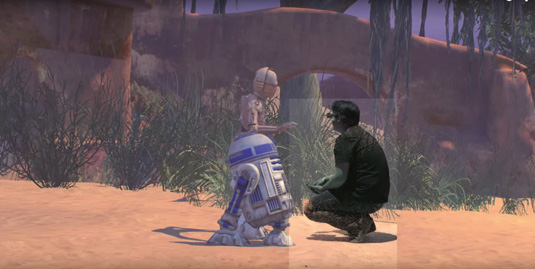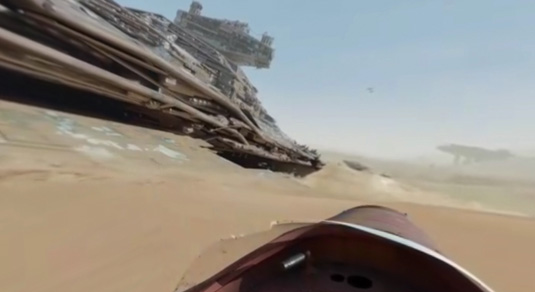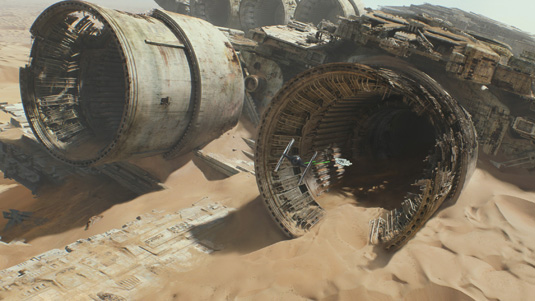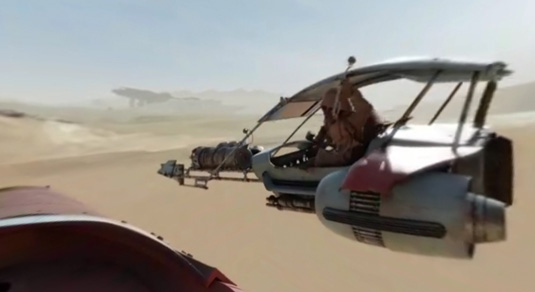Are studio blockbusters advancing the CG industry?
We reveal how CG developments in the multiplexes can trickle down to your home set-up.

With the global blockbuster Star Wars having stormed multiplexes across the globe, and all of the promotion and fanfare around the next instalment that is driving massive awareness, let's take a look at some of the innovations from the world of VFX, VR and AR that the studio have used to engage with its audience.
Is this from an entirely marketing perspective, or are there other reasons why the studio has explored new technology and channels, in order to further engage their loyal fan base? And also, what are these uses doing for the industry as a whole?
In the lead up to release, Lucasfilm ILMxLAB used various new technologies to position the franchise as a global leader and connect with the hardcore fans looking for any news or insights into The Force Awakens.
There is no better example of this than the first 360 Video for Facebook, where you can look-around the environment as you speed across the Jakku desert. This video was exclusively released in partnership with Facebook and was used to showcase their technology and what is possible.
Due to this first, Star Wars received a plethora of news coverage across the globe as these two famous companies worked collaboratively to launch a new product, with mutual benefit. Bang, PR gold and a marketing coup.
Engaging audiences further

Moving away from the marketing benefits that innovation delivers, there is a far deeper reason why Lucasfilm ILMxLAB have invested in new technology and initiatives. The world of VR and AR offers storytellers a more immersive channel to deliver their vision to the audience, and the audience are crying out for this interactive content where they can explore the world they love.
We've all dreamed of being C-3PO, a stormtrooper, Luke Skywalker or maybe even Darth Vader... Now this is entirely possible as we can live stories through the eyes of multiple characters and perspectives thanks to VR.
Does this move from the linear to dynamic make the director redundant? No, it simply changes their role and requires them to adopt new skills and now craft the piece through multiple screens and eyes, leaving the final choice to the viewer.

This choice can already be seen in open world games like GTA, where the gamer can play the game anyway they like. They can engage with the storyline through missions, they can go on a rampage, or they could just sit in the car and drive around the city listening to the radio. All have their merits, but the variety open to the user can show real depth and immersion.
This therefore presents an opportunity where the creators of traditional 90-minute features can design extensions where the audience can explore in-depth different elements of the world they are passionate about.
The storyteller now has the chance to develop parallel (complementary) threads that can be discovered and consumed alongside the traditional feature. This engagement brings fans even closer, and arguably makes them even bigger fans.
Impact on the industry

With IPs like Star Wars and the enormous content generated alongside a theatrical release devoured by the audience, an opportunity is created to leverage and try new technology. As the investment in the new technology has significant costs, it makes complete sense for the larger blockbusters to be the ones that drive this innovation. After all, would you spend the time and money creating these in-depth worlds if you didn’t 100 per cent believe that the audience was there?
With the environments and worlds that are being created in uber-realistic fashion, the computing power required to deliver this is more and more demanding, but solutions are already being found. At Siggraph this year ILMxLab demonstrated content being rendered in "the cloud" and beamed down to a tablet, giving viewers the ability to become different characters in a scene with classic Star Wars characters.
In summary, the global blockbusters from Star Wars through to GTA are driving innovation, which over time trickles down and becomes available to more and more storytellers, creating new exciting opportunities for the industry as a whole.
For more information visit: www.bit.ly/starwars-vr
This article was originally published in 3D World issue 204.

Thank you for reading 5 articles this month* Join now for unlimited access
Enjoy your first month for just £1 / $1 / €1
*Read 5 free articles per month without a subscription

Join now for unlimited access
Try first month for just £1 / $1 / €1
Get the Creative Bloq Newsletter
Daily design news, reviews, how-tos and more, as picked by the editors.
